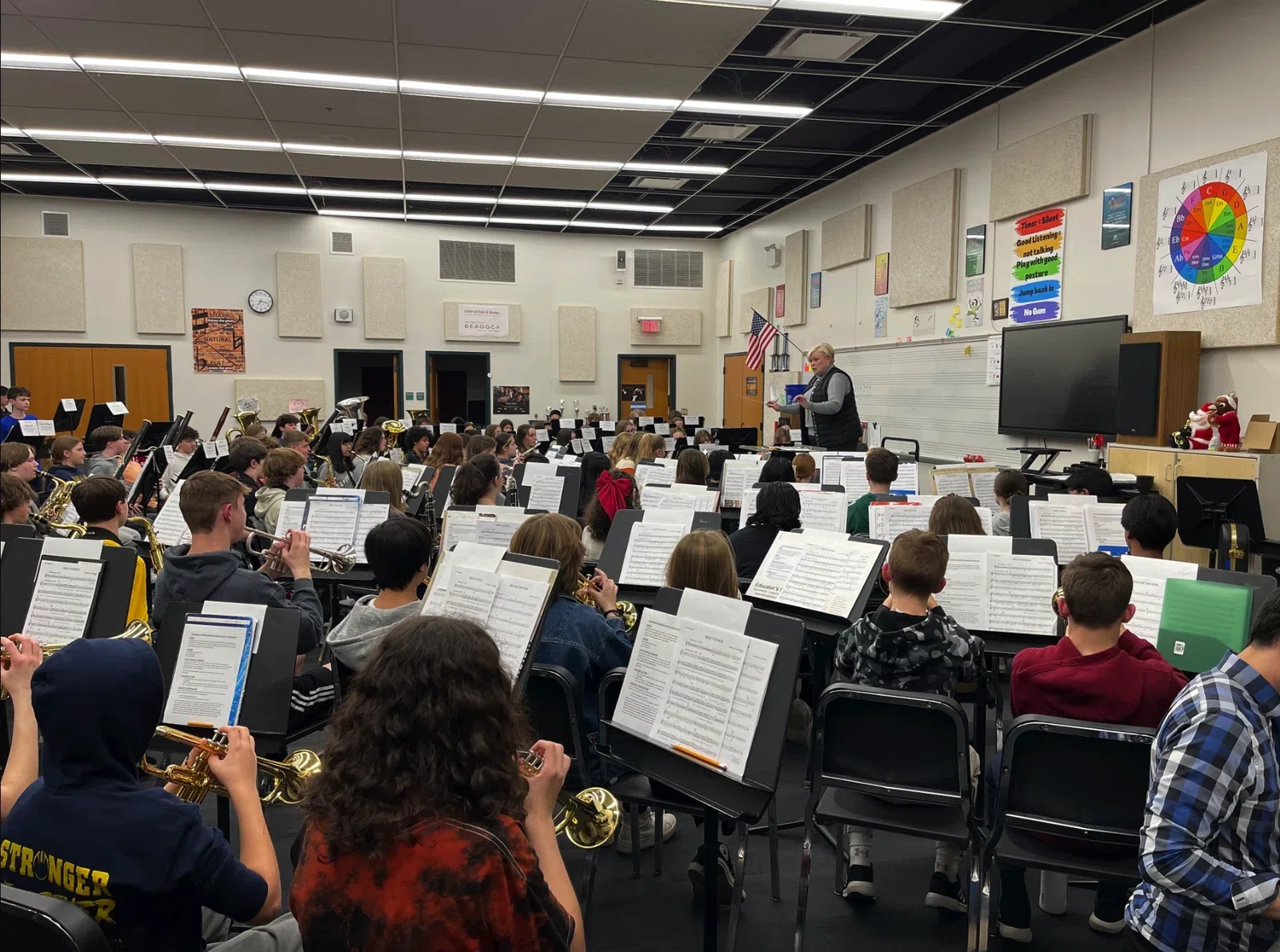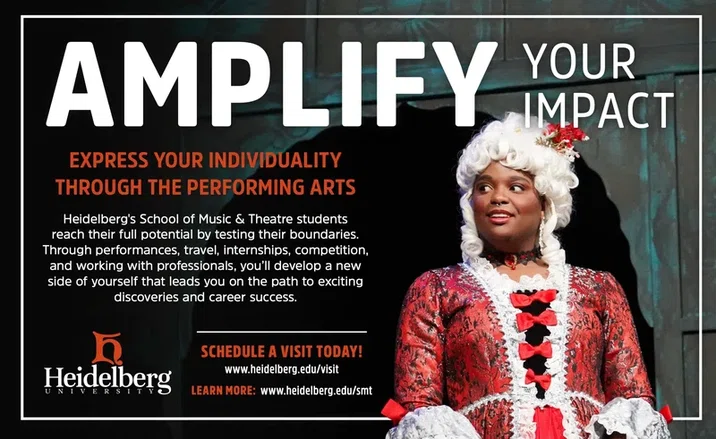©2023 Ohio Music Education Association



FEATURED ARTICLES
Revisiting Reflective Practice: Ideas for Music Educators
Revisiting Reflective Practice: Ideas for Music Educators
Dr. Lisa Martin

In education, reflective practice is the process of critically examining one’s perspectives, routines, and approaches to uncover opportunities for growth and improvement. Reflective practice is an essential component of lifelong growth as a music educator (Piazza et al., 2020). But why is reflective practice so important? Scholar Barbara Larrivee addresses this question sharing, “Teacher beliefs are self-generating and often unchallenged. Unless teachers develop the practice of critical reflection, they stay trapped in unexamined judgments, interpretations, assumptions, and expectations” (2000, p. 293). Unfortunately, once music teachers move on from preservice training or complete their induction (e.g., RESA), reflective practice is something that can fall out of one’s routine. As such, this article offers insights on how to incorporate meaningful reflective practice into the music classroom.

Setting the Stage for Reflective Practice
Setting the Stage for Reflective Practice
Researchers have determined that there are a range of ways to conceptualize and implement reflective practice (Machost & Stains, 2023). For example, Larrivee (2000) suggests three key elements to approaching reflective practice. First, teachers must make time for reflection. Certainly, finding time can be one of the biggest challenges for music educators, but ideally, reflection is incorporated into daily practice in some manner. However, this practice does not have to be overly burdensome. Simply taking a few minutes to jot down some thoughts at the end of the school day, or recording a voice memo about your practice on the drive home can be a good start to weaving reflective practice into your daily routine. For example, you might take a few minutes to record a voice reflection about a challenging interaction with a student, sharing wonderments about alternative approaches you might explore in the future.
Next, Larrivee (2000) notes that reflective teachers should be problem-solvers and experimenters, avoiding the notion of permanent practices or procedures in the classroom. Problem solving should involve seeking out reasons behind our practice, uncovering new ideas and feedback that might reshape our practice, and applying deliberate intention when implementing change in the classroom. Reflective practitioners as problem solvers are adaptive, curious, and resilient. In considering recent rehearsal, for example, a teacher might reflect, “I wonder if there is some other reason behind why the students are losing a sense of pulse in the second movement?” This question could prompt a range of different solutions to the ensemble’s pulse challenges.
Finally, reflective practitioners must question the status quo (Larrivee, 2000; Piazza et al., 2020). In many ways, this goes hand in hand with problem solving and experimentation. Larrivee points out, “When teachers make a practice of questioning the status quo and conventional wisdom, they seek their own truth and remain opening to examining the assumptions that underly classroom practices” (2000, p. 297). In music, this can be a difficult step, given how deeply rooted much of our practice can be in tradition. However, deep-rooted traditions can be precisely the reason why questioning the status quo is an essential practice. Though there are risks with thinking and acting outside the box, taking a stand and modeling such practices can encourage others to reexamine their own assumptions, as well.
Timing, Depth, and Content of Reflections
Timing, Depth, and Content of Reflections
Beyond the considerations mentioned thus far, scholars Machost and Stains (2023) discuss the importance of implementing various types of reflection. More specifically, they recommend practitioners consider the timing, depth, and content of their reflections.
There is a misconception that reflective practice always happens at the end of or after a certain experience. With regard to timing, however, reflection should happen at various stages. Music teachers should explore reflecting ahead of practice (e.g., “What approach might work best here?”), during practice (“Does this approach seem to be working right now?”), and after practice (“What might I do differently given how things played out earlier today?”). In essence, these are questions with which music educators are likely engaging on a somewhat regular basis, but approaching these questions systemically is what can enable teachers to take their reflective practice to the next level. Ultimately, reflection should be approached as a multi-chapter story in order for teachers to develop a comprehensive understanding of their practice.
With regard to depth of reflection, Machost and Stains (2023) share the necessity of exploring reflection on varying levels: surface level reflection, pedagogical reflection, and critical reflection. A surface reflection might simply be asking, “Were the students prepared for this concert?” while a pedagogical reflection might begin with the question, “How might implement a different approach to programming for our next performance?” Critical reflection might involve reexamining certain philosophies behind practices in the classroom. For example, one might ask, “What is the rationale and benefit behind starting seating placements in seventh grade versus eighth grade?” Similar to timing considerations, reflections should touch on varying levels of depth in order to best gauge how to move forward.
Finally, music educators should consider the content of their reflections. This component effectively focuses on what specific element is being considered in the reflection. Similar to the other areas of reflection, content reflections should be approached comprehensively. For example, a teacher might engage in technical reflection when considering their conducting pattern and gestures, but then explore personalistic reflection when considering the relationships with their colleagues or students. Teachers might also engage in deliberative reflection, which encourages weighing extant practices against alternative viewpoints specific to a certain content objective or pedagogical approach. In sum, Machost and Stains (2023) recommend first starting with a question about one’s practice, and then allowing that question to reveal the dimensions of reflection that are best suited to provide an answer or emerging idea.
Conclusion
Conclusion
Machost and Stains (2023) offer a reminder that reflective practice does not need to center on that which needs improvement alone; it is equally as important reflect upon the things that are going well in the classroom and to celebrate those accomplishments. The dimensions of reflective practice summarized in this article reflect just a small fraction of the wealth of resources available on this topic. While there are a range of approaches, in the end, music teachers should cultivate a system of reflective practice that works best for them and their students.
References
Machost, H., & Stains, M. (2023). Reflective practices in education: A primer for practitioners. Life Sciences Education, 22(2), 1–11.
Piazza, E., Mills, J., & Ziemann, D. (2020). Reflective music teaching: Ideas for early-career music teachers. Low Down.
Dr. Lisa Martin is currently Assistant Professor of Instruction in the Ohio Honors Program at Ohio University. She is in her 18th year as a music educator.
SHARE ARTICLE:



